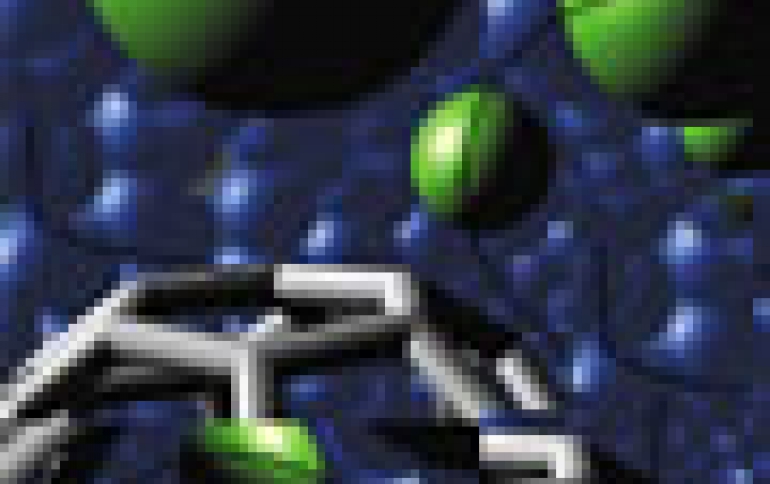
Nanotech To Enable 100GB Solid State Memory
Researchers at Imperial College London announced that thay have developed technology that would enable the creation of three-dimensional microchips, which will dramatically increase their memory capacity
Researchers from Imperial College London, Durham University and the University of Sheffield say their
new computer chip design will enable large amounts of data to be stored in small volumes by using a
complex interconnected network of nanowires, with computing functions and decisions performed at the
nodes where they meet a similar approach to neurons and axons in the brain.
This latest research, however, has the potential to develop a chip that combines the storage capability of a hard drive with the low cost of memory cards, potentially increasing memory capacity by 200 times from an average of 500MB to around 100GB.
Lead researcher Russell Cowburn , Professor of Nanotechnology in Imperial's Department of Physics, explains: "The new video mobile phones are very popular, but they desperately need more memory so that people can take longer videos and store them. This technology has the potential to transform mobiles into fully functioning video cameras, in addition to a range of other applications."
The technology is based on the discovery by Professor Cowburn and colleagues that by using nanotechnology it is possible to reproduce the key functions of semiconductor electronics in microchips using only the 'spin' of electrons, which is responsible for magnetism, rather than the more conventional 'charge' that traditional microchips use.
This has allowed them to construct a completely new architecture for electronics in three dimensions rather than the two dimensional flat structure of conventional microchips, an approach Professor Cowburn compares to using cupboards instead of table tops for storing goods.
He says: "Traditionally we have used electronics for microchips and magnetism for hard disk drives. This discovery allows us to combine these two approaches to make a new generation of 3D microchips that can store so much more information than a flat two dimensional surface."
The team is now working with commercial partners to develop the technology and is currently building a more advanced demonstrator chip using full microchip manufacturing facilities.
This latest research, however, has the potential to develop a chip that combines the storage capability of a hard drive with the low cost of memory cards, potentially increasing memory capacity by 200 times from an average of 500MB to around 100GB.
Lead researcher Russell Cowburn , Professor of Nanotechnology in Imperial's Department of Physics, explains: "The new video mobile phones are very popular, but they desperately need more memory so that people can take longer videos and store them. This technology has the potential to transform mobiles into fully functioning video cameras, in addition to a range of other applications."
The technology is based on the discovery by Professor Cowburn and colleagues that by using nanotechnology it is possible to reproduce the key functions of semiconductor electronics in microchips using only the 'spin' of electrons, which is responsible for magnetism, rather than the more conventional 'charge' that traditional microchips use.
This has allowed them to construct a completely new architecture for electronics in three dimensions rather than the two dimensional flat structure of conventional microchips, an approach Professor Cowburn compares to using cupboards instead of table tops for storing goods.
He says: "Traditionally we have used electronics for microchips and magnetism for hard disk drives. This discovery allows us to combine these two approaches to make a new generation of 3D microchips that can store so much more information than a flat two dimensional surface."
The team is now working with commercial partners to develop the technology and is currently building a more advanced demonstrator chip using full microchip manufacturing facilities.













